Asian LNG momentum set to subside in 2022 [Gas in Transition]
Asia’s gas consumption recovered strongly in 2021, helping the region lead global growth in LNG imports for the second consecutive year. Last year’s LNG inflows into the Asian market confirmed the region as an engine for long-term global demand of the transition fuel, but patchier growth is anticipated for 2022 as momentum ebbs in the core consumption markets of China, Japan and South Korea.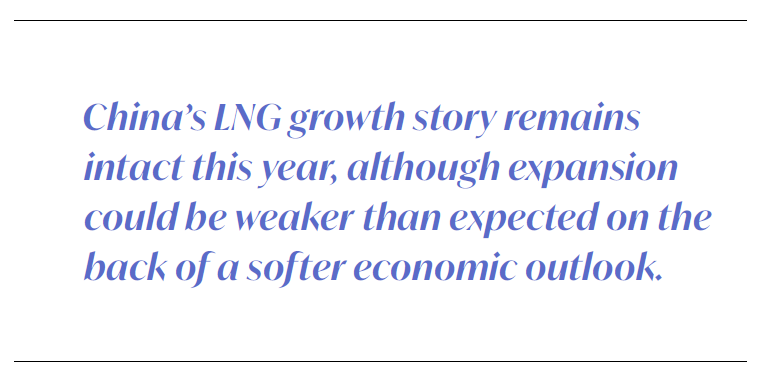
Asia’s gas demand expanded by 7% year/year in 2021, a considerable improvement from 0.5% in 2020, although the gains were uneven both geographically and over the course of the year, according to the International Energy Agency. Asian LNG demand last year increased by 22mn metric tons or 17% yr/yr, easily outpacing fellow key markets Europe and Latin America, according to Bernstein Research.
China contributed the majority of Asia’s LNG import growth, as imports climbed by 18.3% to a record 78.93mn mt, confirming that it eclipsed Japan as the world’s biggest LNG buyer last year.
Chinese demand growth to slow
China’s LNG growth story remains intact this year, although expansion could be weaker than expected on the back of a softer economic outlook. While domestic energy demand has already returned to pre-COVID-19 norms and the domestic coronavirus situation remains under control in spite of sporadic outbreaks, the world’s second-largest economy is wrestling with a slowdown that could see this year’s GDP rise at the slowest in decades.
Sinopec has predicted China’s gas demand will rise to 395bn m³ this year, a 6% increase from the 372.6bn m³ that the Chinese government estimates was consumed in 2021. The growth forecast would represent a sharp deceleration from growth of 12.7% in 2021.
CNOOC and Sinopec recently issued two supply tenders totalling more than 50 cargoes – many of which were unawarded. This suggests China’s first and third-largest LNG importers respectively are sitting on ample inventories amassed from aggressive purchases last year, a strong sign that the Chinese market will be well-supplied for most of this year.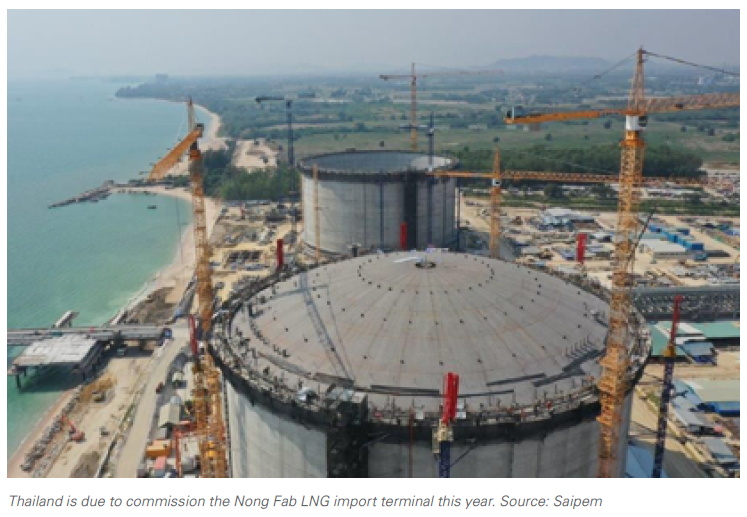
Chinese sources expect domestic gas demand to be weak in the first quarter of 2022 due to temporary closures of big industrial polluters that run on gas during the Winter Olympics and Paralympic Games near Beijing. These will be followed by China’s two annual high-profile political sessions in March.
The weather has not been overly supportive of gas demand either, with relatively warm weather since China’s four-month northern heating season began last November. An economic slowdown and gentler adoption of coal-to-gas switching by Beijing also implies that gas demand growth – while remaining positive – will decelerate this year, reducing the need for LNG imports.
Pipeline imports are also set to accelerate, which will crowd out room for additional LNG procurement. Gazprom pumped more gas to China along the Power of Siberia pipeline last year than the 10bn m³/yr that was anticipated, and this year’s transmissions could again exceed the committed volume of 15bn m³/yr.
Put altogether, Oslo-based energy consultancy Rystad Energy expects China’s LNG imports to grow to 89mn mt this year, which would be an increase of 12.8% from 2021. BloombergNEF meanwhile is more pessimistic and sees imports rising by 7.5% to 84.6mn mt.
Dynamics in Japan, South Korea
LNG inflows into Japan and South Korea were relatively steady last year. Motivated by heightened security-of-supply concerns buyers in both countries were busy filling surface inventories into late 2021, but may now have to relax imports to allow storage to draw down. The road to recovery from the pandemic has been bumpy in both markets, but their governments are now in a position to plot the next phase of their reopening plans.
Japan’s LNG imports declined by 0.2% in 2021 from a year earlier, although they remained sizeable at 74.2mn mt. Japanese nuclear power generation trended close to best-case scenarios for much of last year and although output could ebb in Q1 due to seasonal maintenance, generation is expected to remain relatively high.
South Korea’s LNG imports grew strongly last year, climbing by 14.9% from 2020 to 45.9mn mt due to delays in the startup of nuclear generation and temporary shutdown of several coal-fired power plants. It is unclear if the robust growth will be maintained into 2022. The short-term outlook is uncertain as South Korea prepares to hold its 20th presidential election next month.
Incumbent president Moon Jae-In’s focus is to reduce reliance on coal and nuclear in favour of gas and renewables. Support for gas has come via South Korea’s publication of its green taxonomy last month, which included LNG after strong domestic lobbying.
This essentially classifies LNG as ‘green’, and will mean that new LNG-to-power projects will be able to qualify for any kind of green financing or tax incentives. Nuclear on the other hand was not classified as green in the document.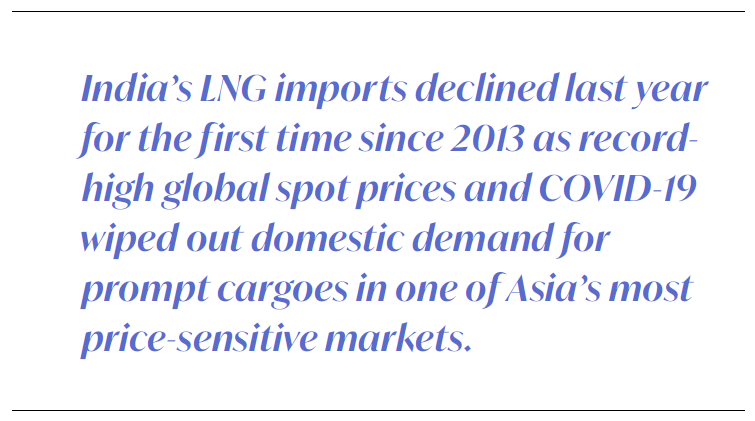
LNG accounts for just over one-quarter of South Korea’s power mix. Seoul’s inclusion of LNG in the green taxonomy indicates it is looking to maintain LNG’s share at current levels before gradually reducing its portion to 19.5% by the end of this decade.
A key risk to note is that South Korea’s energy policies and targets have differed materially each time a new administration comes to power. Next month’s election is unlikely to be different as the remaining top candidates are widely divided on their respective visions for the energy sector despite there being general consensus on the need for more climate action.
This means South Korea’s energy policy direction will likely remain in flux – particularly around the nuclear question, which continues to divide the country politically. Still, for Q1 2022 at least, LNG will be called upon for electricity production as South Korea closed eight to 16 coal-fired power plants from December to February – out of 53 in total currently – to help reduce air pollution.
All in all, Rystad Energy has predicted Japan’s LNG imports this year to reach 76.5mn mt while South Korea’s shipments will climb to 47.1mn mt.
Taiwan’s capacity tapped out
Voters in Taiwan – the world’s fifth largest LNG importer – gave the thumbs-up to the energy transition strategy of incumbent president Tsai Ing-wen in December, rejecting referendums to relocate a contentious third LNG import terminal and revive a long-mothballed fourth nuclear power plant.
While the rejection will support investment into infrastructure that will boost LNG import growth in the long run, the short-term picture is that Taiwan’s LNG inflows could shrink this year on slower economic growth and limited regasification capacity. Taiwan’s existing 10.5mn mt/yr Yung’an and 6.0mn mt/yr Taichung terminals are already operating beyond nameplate capacity.
Taiwan imported around 19.7mn mt in 2021, according to data provider Refinitiv, and the early view among industry insiders is that this year’s volumes could shrink by 5%.
India’s potential
India’s LNG imports declined last year for the first time since 2013 as record-high global spot prices and COVID-19 wiped out domestic demand for prompt cargoes in one of Asia’s most price-sensitive markets.
It could be another challenging year ahead for Indian buyers given expectations of continued high spot prices – Bernstein believes the Japan-Korea Marker could average $16/mn Btu this year, which would be well above the mid-to-high single digits that normally tempt Indian buyers in the power sector.
But an uncertain outlook for domestic gas output may give Indian gas companies little choice but to procure LNG in order to maintain supplies to key consumption sectors such as fertilisers, power, petrochemicals and refineries. Major offshore production projects operated by state-controlled ONGC have underwhelmed, leaving domestic gas output below forecasts and indicating that India will need to step up its LNG imports to meet demand requirements.
Support from Southeast Asia
Sluggish growth in Asia’s traditional LNG markets and India will be partly offset by robust demand in the region’s emerging markets – some of which are expected to make their first forays into LNG imports in 2022.
Vietnam, the Philippines and Hong Kong are in the process of building LNG terminals that are on course for completion this year, meaning there is a good chance they will join the ranks of LNG importers in 2022.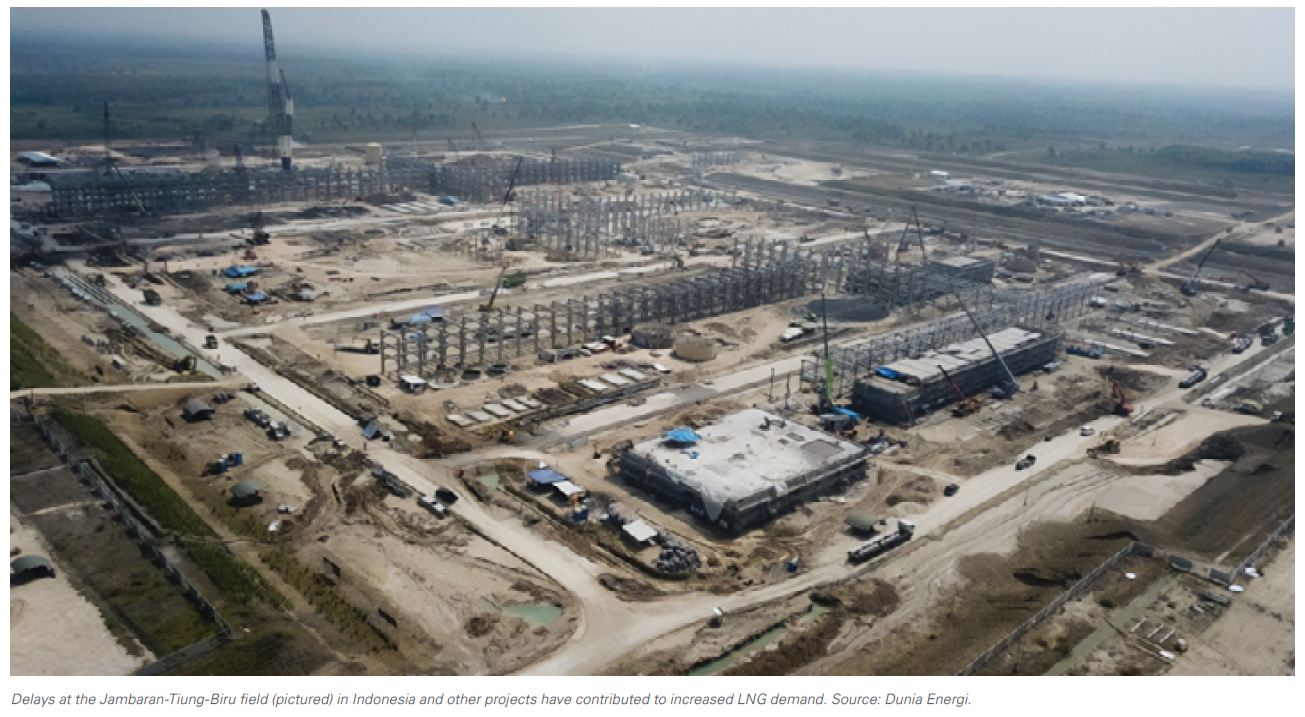
Even amid COVID-19 headwinds and fears of overexposure stemming from last year’s surging spot prices, the Philippines and Vietnam have continued to attract plenty of investor interest in the LNG regasification and power generation sectors, spurred on by declining domestic production, fast-rising demand and still-ample untapped demand growth potential. Other Asian frontier markets such as Pakistan and Bangladesh could also see their LNG demand grow rapidly.
LNG demand will grow in existing importer Thailand – which received its first cargo in 2011 – on the back of declining gas production in the Gulf of Thailand. The country’s LNG imports hit a near all-time high of 700,982 mt in December, up by 88.2% yr/yr and bringing cumulative volumes for last year to 6.69mn mt – up from 19.3% from 5.61mn mt in 2030. State-owned PTT is set to commission its 7.5mn mt/yr Nong Fab import terminal by the middle of this year to support growing domestic gas demand.
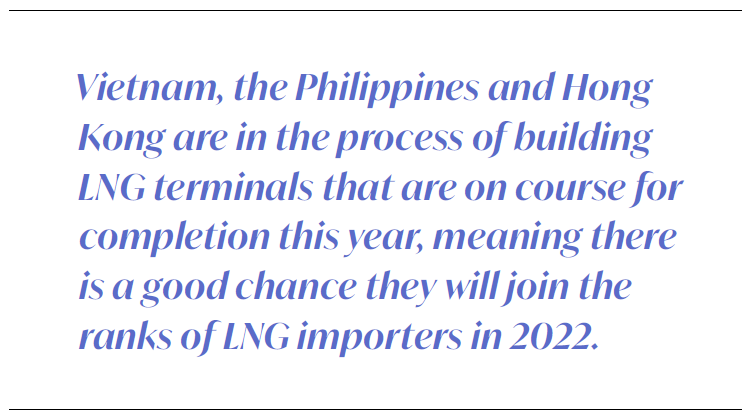 One key reason for the uptick in Southeast Asian LNG demand is the region’s dwindling gas production. Output volumes slumped by 8% in 2020 and were forecast to dip by another 2% last year to 19bn ft³/d (538mn m³/d) due to falling production at mature legacy projects including Mahakam, the MLNG Dua and MLNG Satu production sharing contracts, and Yetagun, according to Rystad.
One key reason for the uptick in Southeast Asian LNG demand is the region’s dwindling gas production. Output volumes slumped by 8% in 2020 and were forecast to dip by another 2% last year to 19bn ft³/d (538mn m³/d) due to falling production at mature legacy projects including Mahakam, the MLNG Dua and MLNG Satu production sharing contracts, and Yetagun, according to Rystad.
Although some upstream projects started up last year, such as Rotan and Merakes fields offshore Malaysia and Indonesia respectively, delays and stalled developments have continued to plague Southeast Asia’s gas production.
For instance, Indonesia’s anticipated recovery in domestic gas production has had to wait after two significant developments – Tangguh LNG T3 and the Jambaran-Tiung-Biru field unitization – were pushed back to this year.



